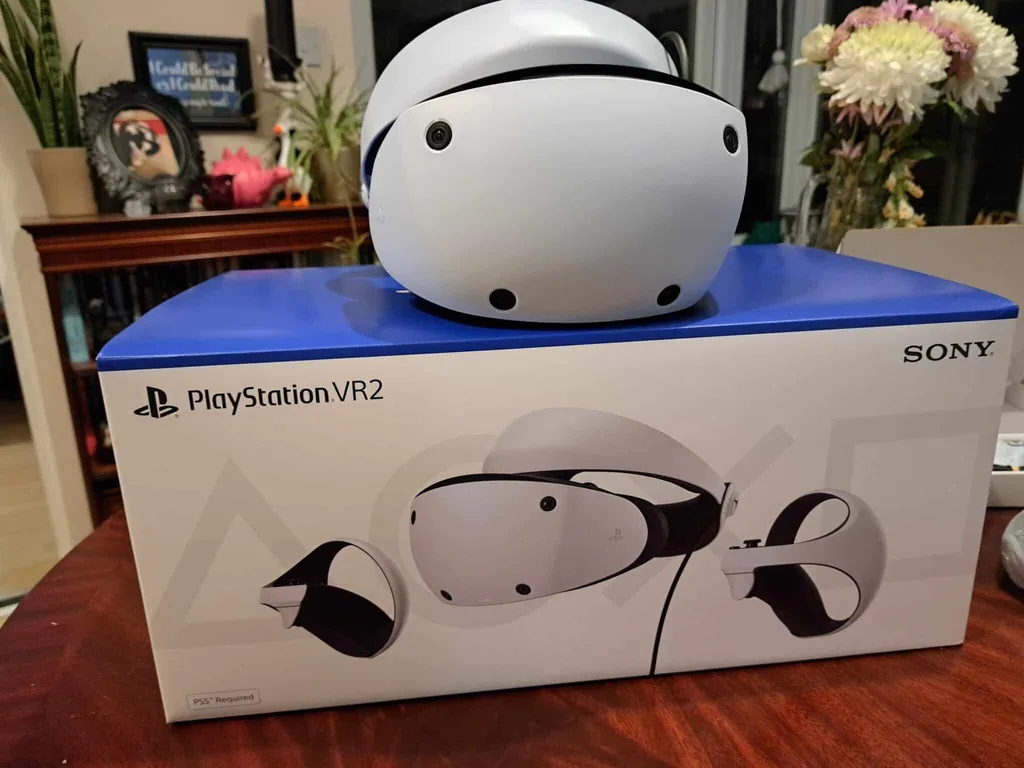PlayStation VR2 heralds the next-generation of console-based VR on PS5. We’ve had the chance to put Sony’s new headset through its paces over the past week, so how does it hold up? Here’s our PSVR 2 review.
After years of waiting, PSVR 2 is finally here and it’s shown me just how straightforward things can be. At a time when modern VR was finding its feet, Sony championed the potential of console-based virtual reality with PlayStation VR on PS4, housing an impressive library of exclusive games like WipeOut: Omega Collection, Astro Bot: Rescue Mission and Blood & Truth. Sony’s commitment to high-quality VR showcased what was possible long before Quest took hold of the market starting in 2019.
Like its predecessor, PSVR 2 sits in a unique position. Sony remains the only console manufacturer committed to VR at this level. Microsoft briefly showed interest for Xbox, while Nintendo’s Labo VR efforts barely count. Though it lacks the price advantage of standalone headsets like Meta Quest 2, PlayStation VR2 provides high-end VR with the ease-of-use inherent to console gaming. It’s also likely a cheaper and easier option than building a PC-based VR setup, with the added bonus of Sony-exclusive titles that aren’t available elsewhere.
PlayStation VR2 feels like a brilliant next step for the PSVR ecosystem, but do the advantages outweigh the alternatives? Is it actually worth the trade-offs? Let’s have a look.
PSVR 2 System Pricing & Overall Package
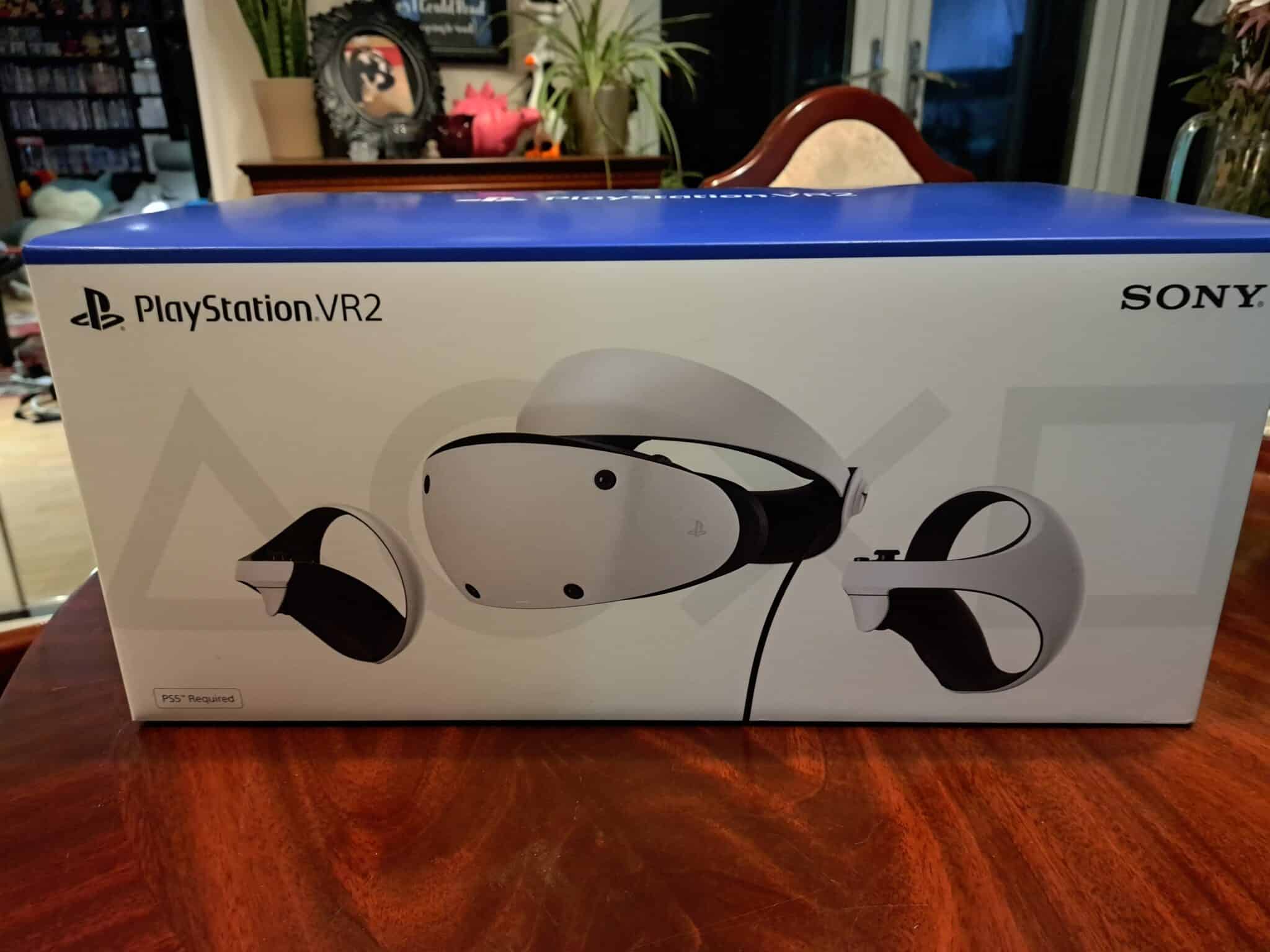
For a launch price of $550, PSVR 2 offers some impressive specifications: an OLED display; eye-tracking; adaptive triggers; haptic feedback in both the controllers and headset; and more. Coupled with decreased loading times thanks to PS5’s solid state storage, it’s a monumental step up from the original PSVR.
All that said, PSVR 2 costs more than a PS5, so it feels like Sony is banking on you owning the console already. With the console starting at $400 for the digital-only edition, PSVR 2 adds up to a significant investment compared to standalone headsets like Quest 2 or Pico 4.
Inside the box, PSVR 2 includes the headset itself, in-ear stereo headphones (with swappable earpieces in three sizes), a USB-C charging cable and two Sense controllers. It’s a far cry from the utter mess of wires involved with the original PSVR and its processing box, as pictured below.
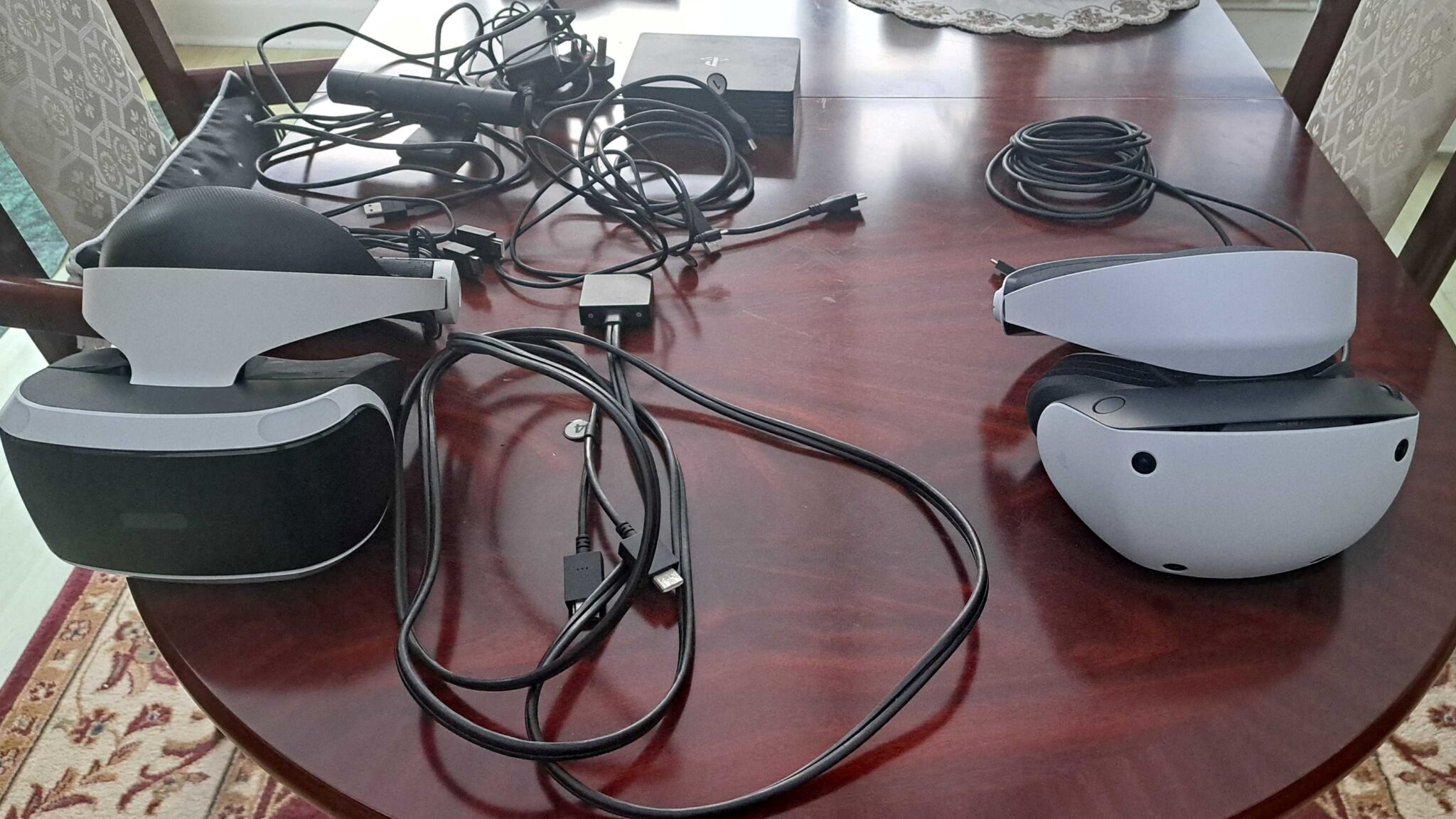
By comparison, connecting PlayStation VR2 to your console is refreshingly straightforward. Sync the Sense controllers to your PS5 and plug your headset into the console via the USB-C port at the front – that’s it. You’ll then follow some brief first-time setup instructions on the TV and check your room’s brightness (which, if too light or too dark, can adversely affect tracking) but after that, everything else takes place inside the headset. You can even use PSVR 2 without a TV once you’ve finished the initial setup process.
Headset Design, Comfort & Features
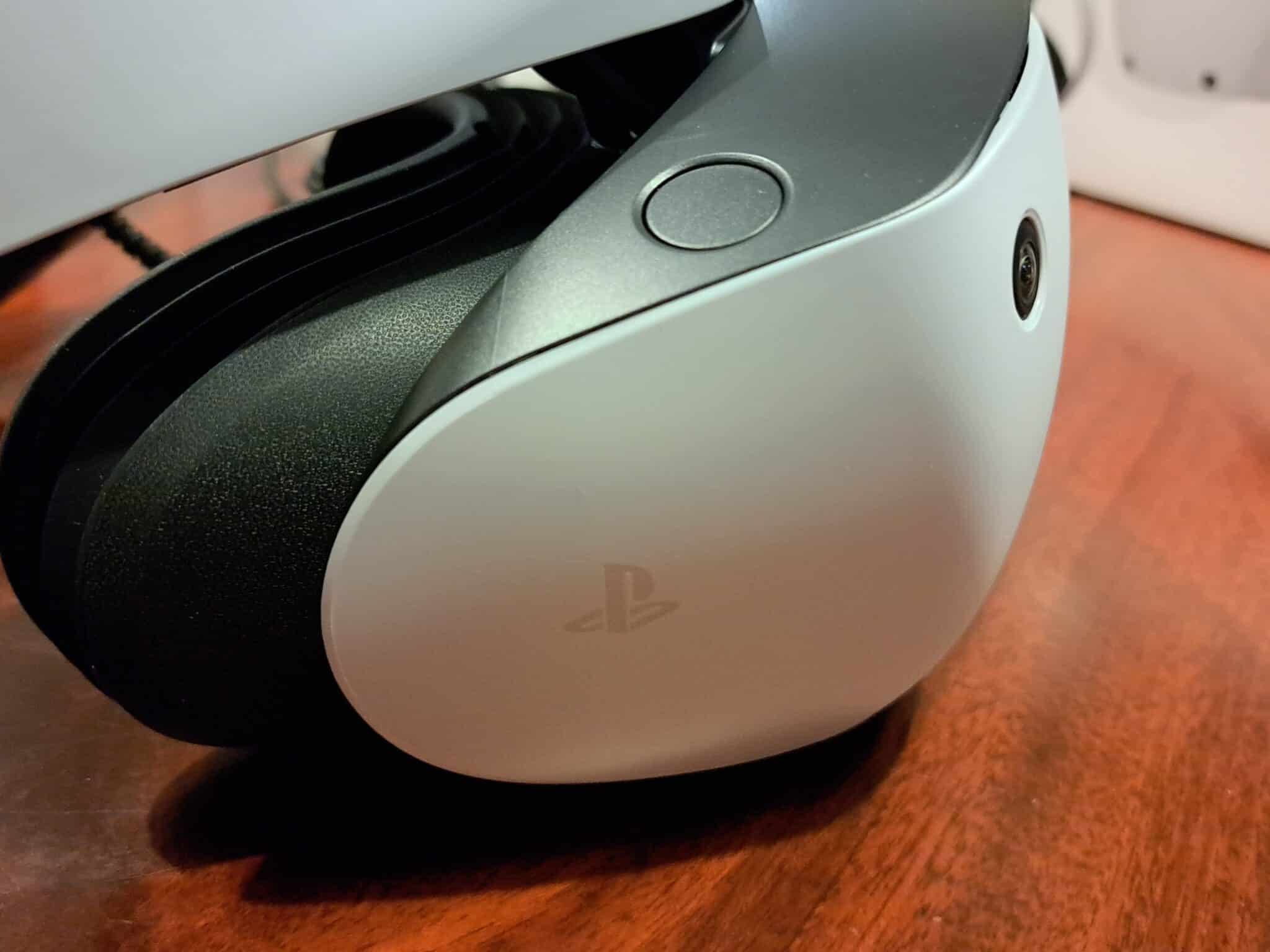
PlayStation VR2 is one of the comfiest VR headsets I’ve ever worn. Weighing 560 grams, it’s 7% lighter than the original PSVR headset, despite the additional features like eye tracking and haptics. It uses a similar halo strap design to PSVR and Meta Quest Pro, with a strong build quality that feels much sturdier than Quest 2’s elite strap. Overall, it’s a familiar design. You can slide the HMD closer or further out from your head, and adjust the rear turnwheel to tighten or loosen the strap. Quest 2 often creates an uncomfortable pressure on my forehead, but weight feels more evenly distributed with PSVR 2 – I used it for hours without any such concerns.
That said, keep in mind that everyone has a different head shape, so headset comfort won’t be the same for everyone. Your mileage may vary.
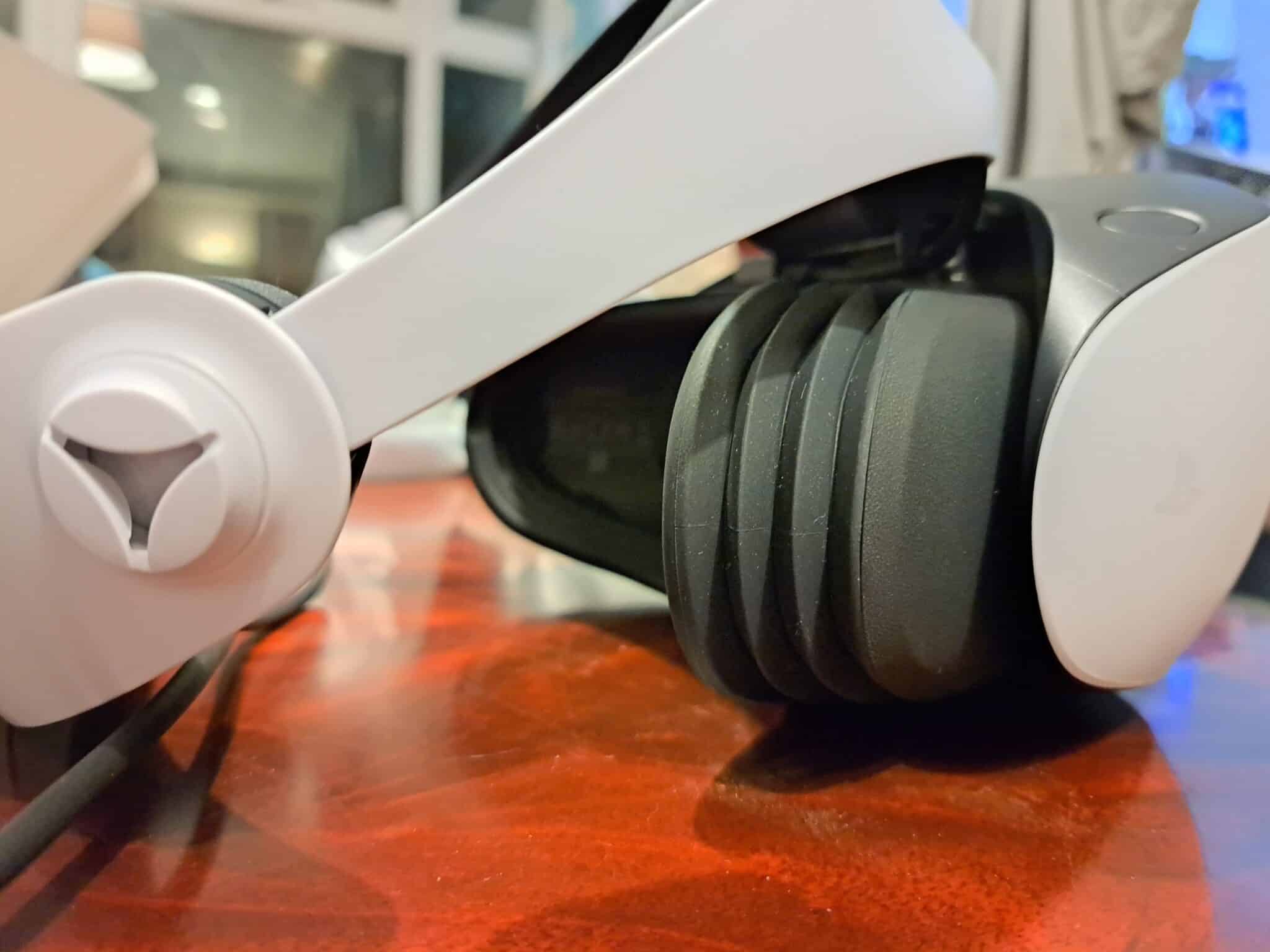
There’s a lot to love about PlayStation VR2’s new features, which offer a stunning upgrade if you never ventured beyond the original headset. The new in-headset haptic feedback subtly improves immersion, such as in Tales From The Galaxy’s Edge where it’s used to signal danger after cargo crashes into a space station. Likewise, eye tracking can enhance the experience in subtle ways, such as easy menu navigation in Horizon Call of the Mountain.
The biggest disappointment is Playstation VR2’s audio. Just like the original PSVR, your options are either TV audio or the detachable 3.5mm in-ear headphones that come in the box. While the original PSVR had volume buttons on the cord (and later on the headset itself in a revised model), there’s no physical volume buttons on PSVR 2. Volume is only adjustable via the ‘Sound’ settings in the quick menu. It feels likely that Sony is pushing its wireless Pulse 3D headphones for PSVR 2 instead, which do include physical volume buttons but also add cost to the entire system.
Screen/Visuals
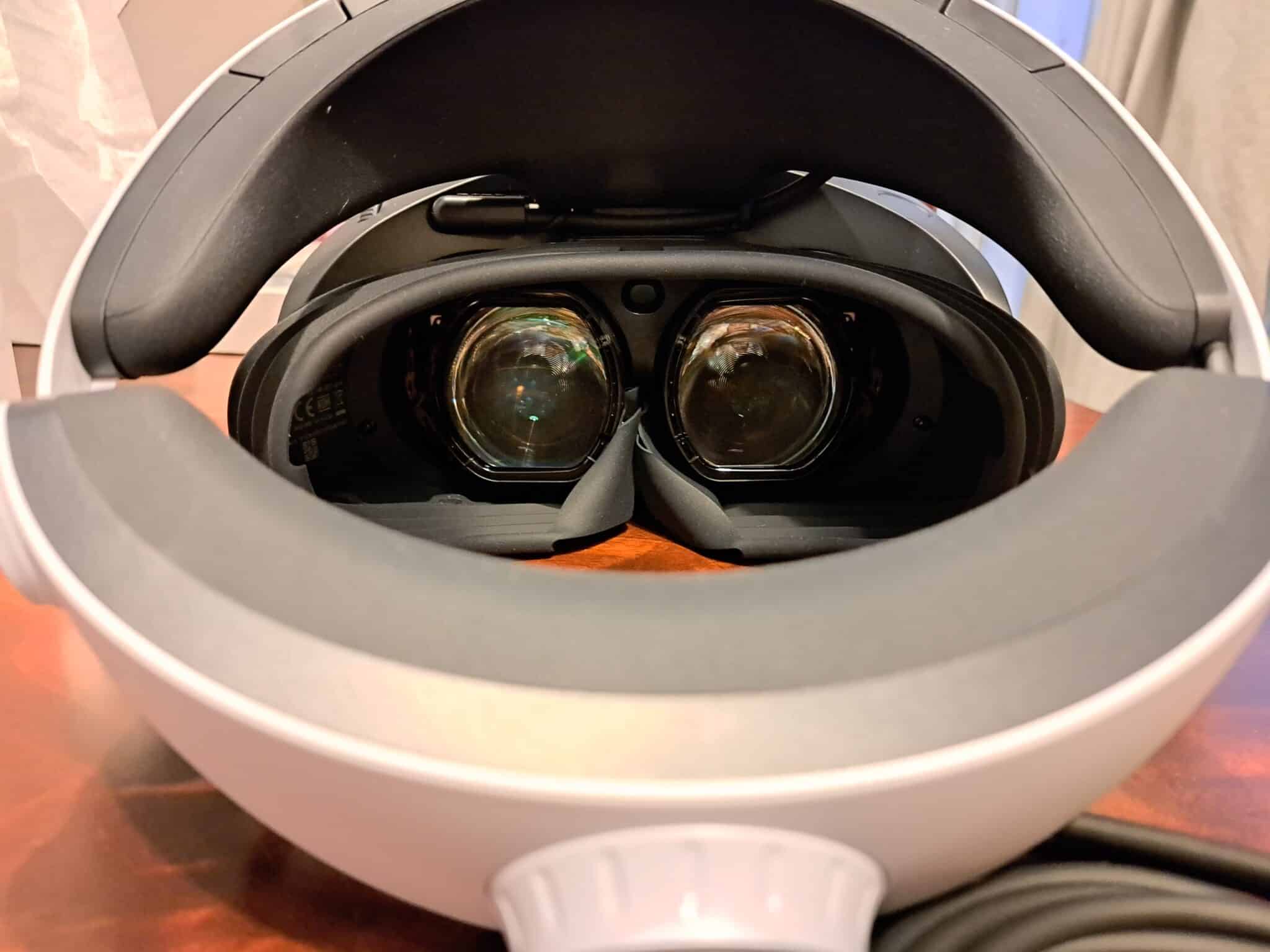
Wearing PlayStation VR2 feels very similar to the original PSVR, though there’s some key changes with the display. PSVR ran at 1080p resolution, displayed at 960×1080 per eye. By comparison, PSVR 2 manages 4K resolution with 2000×2040 per eye. Both PSVR headsets use an OLED display, which offers richer colors and deeper blacks than the LCD display in Quest 2. The difference is immediately apparent.
PSVR could run content at 90 FPS, 120FPS or a third mode where 60 frames were reprojected up to 120 FPS. PSVR 2 similarly offers native 90 or 120 FPS, alongside a reprojected 120 FPS option, but the jump from PS4 to PS5 gives developers much more room to work with.
PSVR 2’s lenses also sport a 110° field of view, according to Sony, which is larger than the original and in the same ballpark as Quest Pro and Pico 4. Those headsets use the newer and slimmer pancake lenses, whereas PSVR 2 opts to stick with the bulkier fresnel lens technology used in most earlier VR headset designs. Despite this, PSVR 2 stacks up favorably. I found myself taking deep breaths surveying the scenery in Horizon Call of the Mountain. Colors felt vivid and I didn’t notice any of the problems with god rays that fresnel lenses are prone to.
The lens and display upgrades combined with the new hardware mean that PlayStation VR2 can deliver experiences comparable to high-end PC gaming. Kayak VR: Mirage, for example, looks just as stunning on PSVR 2 as it does on Steam. Horizon thrives with luscious environments and its high production values felt comparable to Half-Life: Alyx.
PSVR 2’s wired connection strengthens the PC VR comparison even further. While the presence of a wire and the associated cable management can reduce immersion, the powerful hardware, new content and convenient setup make it a worthwhile trade-off.
The headset’s face mask kept external light out entirely and comfortably fit around my glasses, much more so than Quest 2. During setup, the headset also measures your interpupillary distance (IPD) using eye tracking and guides you to adjust the lens distance appropriately. It’s a great way to help you position the lenses just right.
System/Software Features
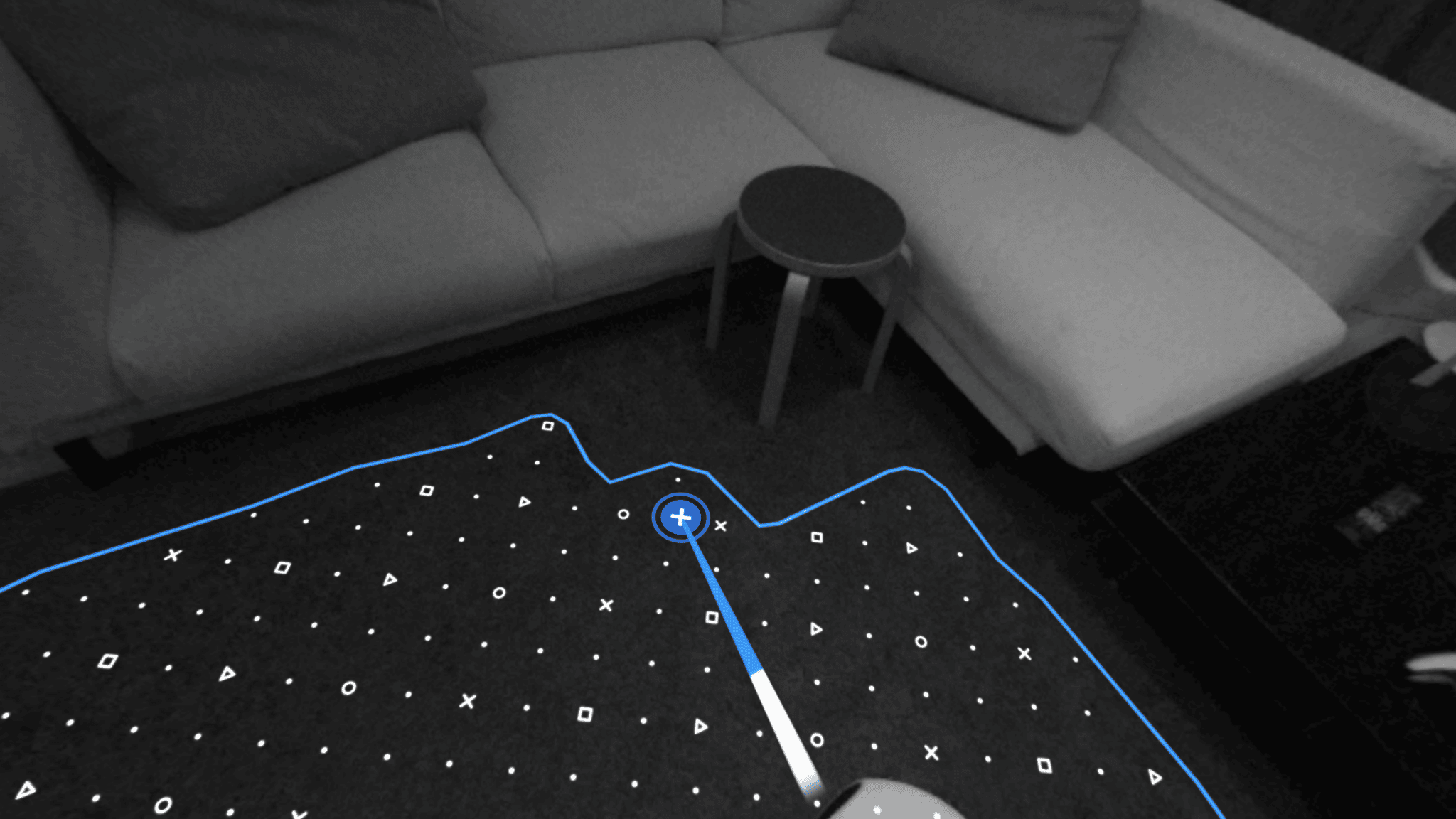
Eye tracking is also used to follow your line of sight in-game, with practical benefits to gameplay. Horizon Call of the Mountain lets you navigate menus with eye tracking, for example, and one mission highlights areas of interest upon looking at them. Rez Infinite lets you target enemies with eye tracking, which is a fun novelty, while Moss: Book 2 follows the player’s gaze and illuminates interactive objects around the environment.
PSVR 2 also supports eye-tracked foveated rendering, a technique which eases rendering demands by following your gaze and only rendering that specific region in high resolution. The end result can be invisible to the user, as the low resolution sections are rendered outside your eyes’ current focus. Games like Song in the Smoke: Rekindled and Gran Turismo 7 use the feature and, testing it on the former, the resolution looked suitably sharp. I couldn’t discern any lower resolution areas, no matter how quickly I moved my eyes to find them.
PSVR 2 also now offers a black-and-white passthrough mode, which lets you view your surroundings at any time via the function button on the bottom of the headset. Not only does passthrough look much clearer than on Quest 2, but the dedicated button makes the Quest 2’s double tap option feel antiquated and clunky in comparison.
Both the Sense controllers and the headset itself feature various forms of haptic feedback. Sense borrows a lot from the PS5’s DualSense controller, such as the adaptive triggers. Titles like Star Wars: Tales from the Galaxy’s Edge use these to vary trigger resistance, changing up the feel of different blasters when fired. In Tetris Effect, the headset vibrates upon choosing a level, while Horizon rumbles when there’s nearby machines. I found these to be subtle but effective methods at improving immersion. There’s also finger position tracking, which I noticed in Horizon when my virtual hand responded to even light pressure on the analog stick, trigger or grip buttons. Even though it didn’t factor much into gameplay, I was nonetheless impressed by the responsiveness.
Using the Headset
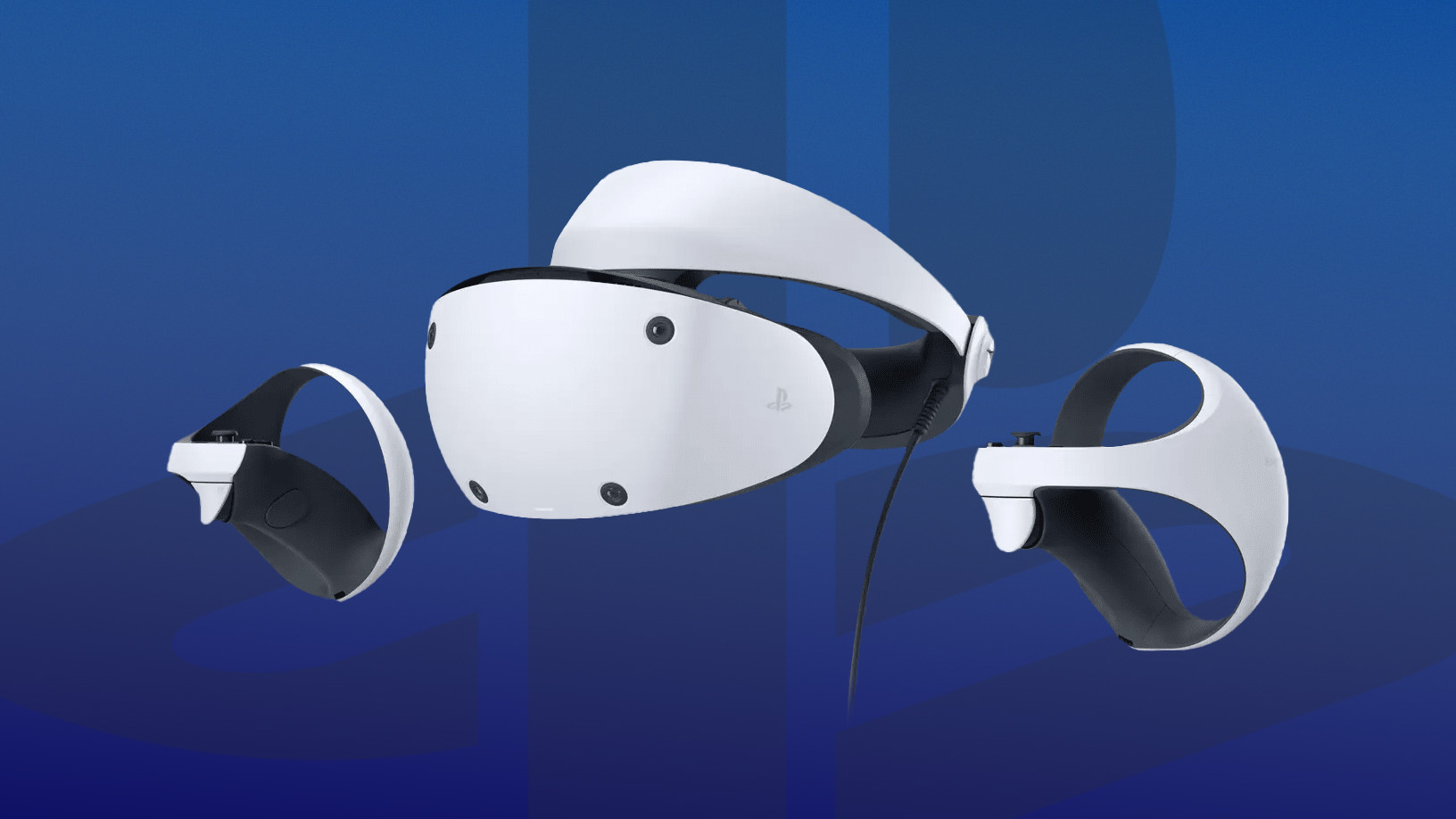
I’ve played roughly half the PSVR 2 launch library, including Horizon Call of the Mountain, Demeo, Star Wars: Tales from the Galaxy’s Edge, Kayak VR: Mirage and more. If you have any specific questions, tune in and comment during our VR Download episode next week on February 21.
Upon setting the PSVR 2’s play area boundaries, it will determine whether your setup is suitable for roomscale, seated or standing gameplay. I’ve not played anything which requires roomscale yet but, like any VR game, the best option depends on the experience. Demeo and Thumper can be easily played seated for example, whereas Star Wars and Horizon feel best while standing.
Even if it doesn’t beat the wireless comfort provided by standalone headsets, moving back to wired VR feels fine. You’ll need to be careful with 360° gameplay, but it never felt too inconvenient to just turn the other way when needed. Compared to the original PSVR, simply plugging in one USB cable and getting on with it is a blessing.
Tracking and Controllers
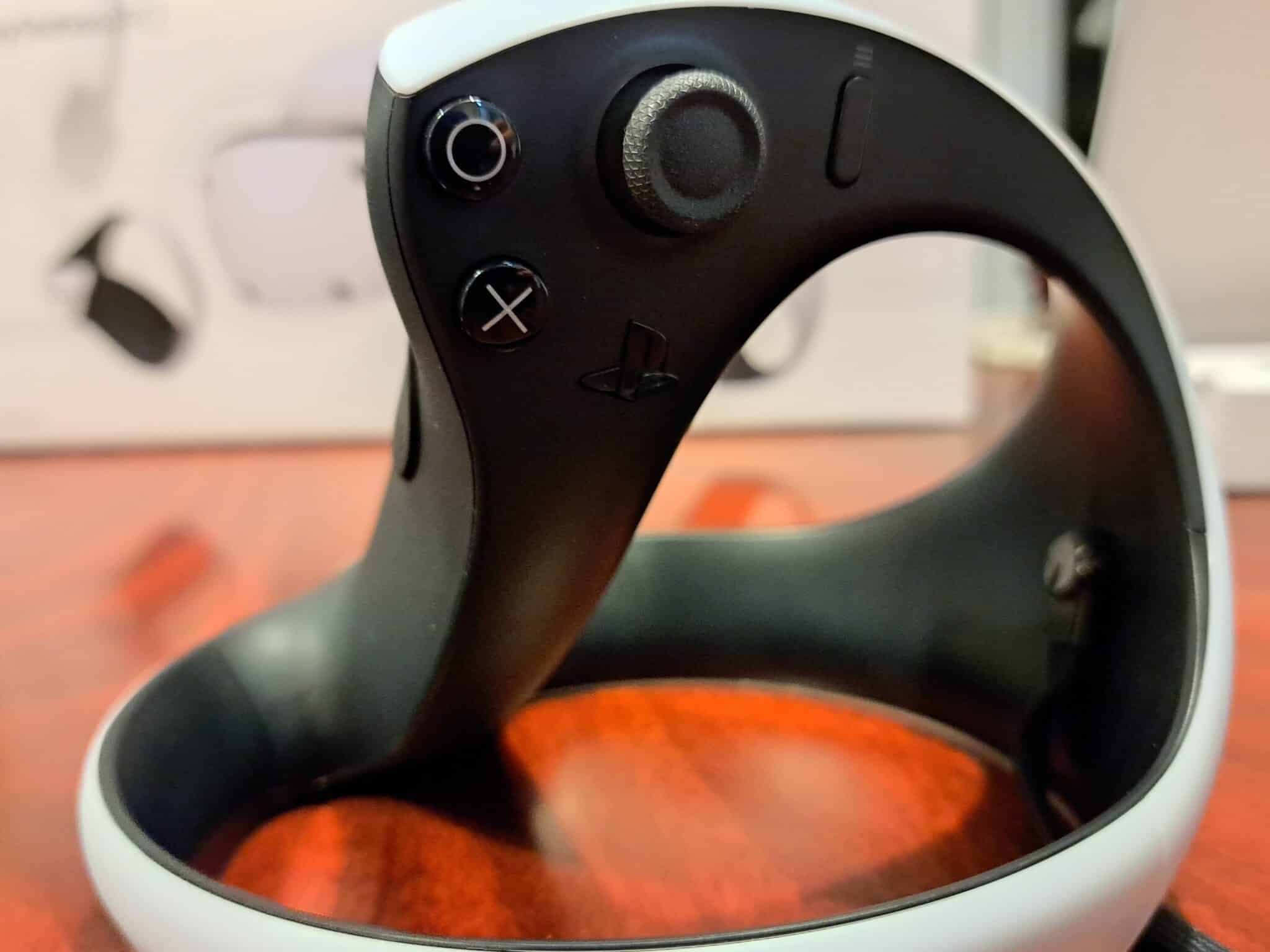
PSVR used an outside-in tracking system reliant on the external PS Camera sitting under or over your TV, which came with some tracking limitations. PSVR 2 uses inside-out tracking via cameras on the headset itself, similar to most modern headsets. It feels significantly better and the Sense controllers are a highly welcome change from the PS3-era PS Move controllers. I did receive ‘Tracking Lost’ errors when sunlight suddenly made the room brighter, but they were infrequent and it fixed itself quickly each time.
The Sense controllers split the PlayStation shape buttons between them and each features an analog stick, alongside grip and trigger buttons that are mapped to L1/R1 and L2/R2 respectively. They’re lightweight, comfortable to hold, and include built-in wrist straps for safety. I like their aesthetic but the orb-like design means it’s very easy to grab the controller the wrong way after putting the headset on. Activating passthrough mode quickly solves that problem though.
I put the controller battery life through its paces with Horizon Call of the Mountain. Using the default haptic feedback settings in-game, the Sense controllers lasted 6 hours and 30 minutes. I’m disappointed this doesn’t last longer, but you can get more life out of Sense if you tone down the haptic and vibration settings. Plus, a quick 30 minute recharge will last hours.
Content Library
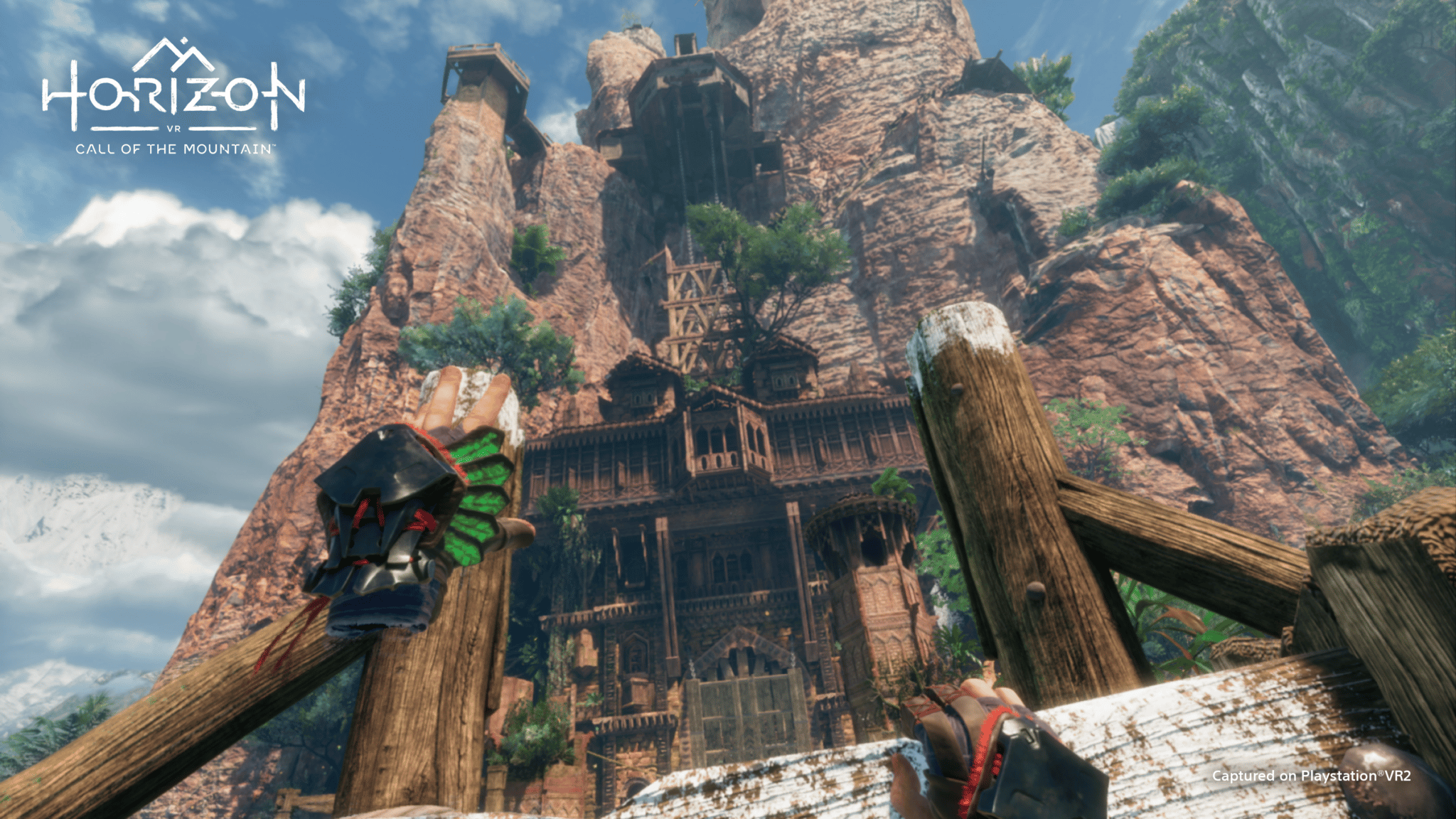
Sony’s new headset features over 30 PSVR 2 launch games, though you’ll have to wait for our hands-on impressions for big names like Gran Turismo 7 or Resident Evil Village. Unsurprisingly, Horizon Call of the Mountain is the big standout here. It’s not a big open world adventure like Zero Dawn, but there’s a sizable campaign that demonstrates the headset’s strengths better than PlayStation VR Worlds ever could on PSVR. You can read our full Horizon Call of the Mountain review here.
Those games are joined by an impressive launch library which includes Tetris Effect: Connected, Pavlov, Moss and Pistol Whip. However, most launch titles are ports, which might prove disappointing for existing Quest 2 or PC VR users, though games like Cities: VR and Star Wars feature significant enhancements. While many games are available elsewhere, a gamer can hardly hope for better than Horizon, Gran Turismo, and Resident Evil at the launch of a new system.
It’s also a huge step up from the launch window of the original PSVR headset and proves that the ecosystem has matured past the forgettable demo experiences in that line-up, such as Call of Duty: Jackal Assault VR and Rogue One VR Mission. I still wish there were more original AAA PSVR 2 games right now, though it’s worth remembering games like Firewall Ultra, The Dark Pictures: Switchback VR and the “supported content” for Resident Evil 4 Remake are on the way.
It’s both understandable and a shame that original PSVR games aren’t backwards compatible with PSVR 2. That said, many developers are releasing PSVR 2 ports, most (but not all) of which are free or discounted next-gen upgrades for owners of the original. Here’s hoping that Sony follows suit with its own back catalog. Most cross-generation games, such as Tetris Effect and Thumper, didn’t look drastically different in my testing, aside from the obvious resolution bump; the differences are often subtle but pleasing, such as added controller haptics.
PlayStation VR2 Review – Final Thoughts
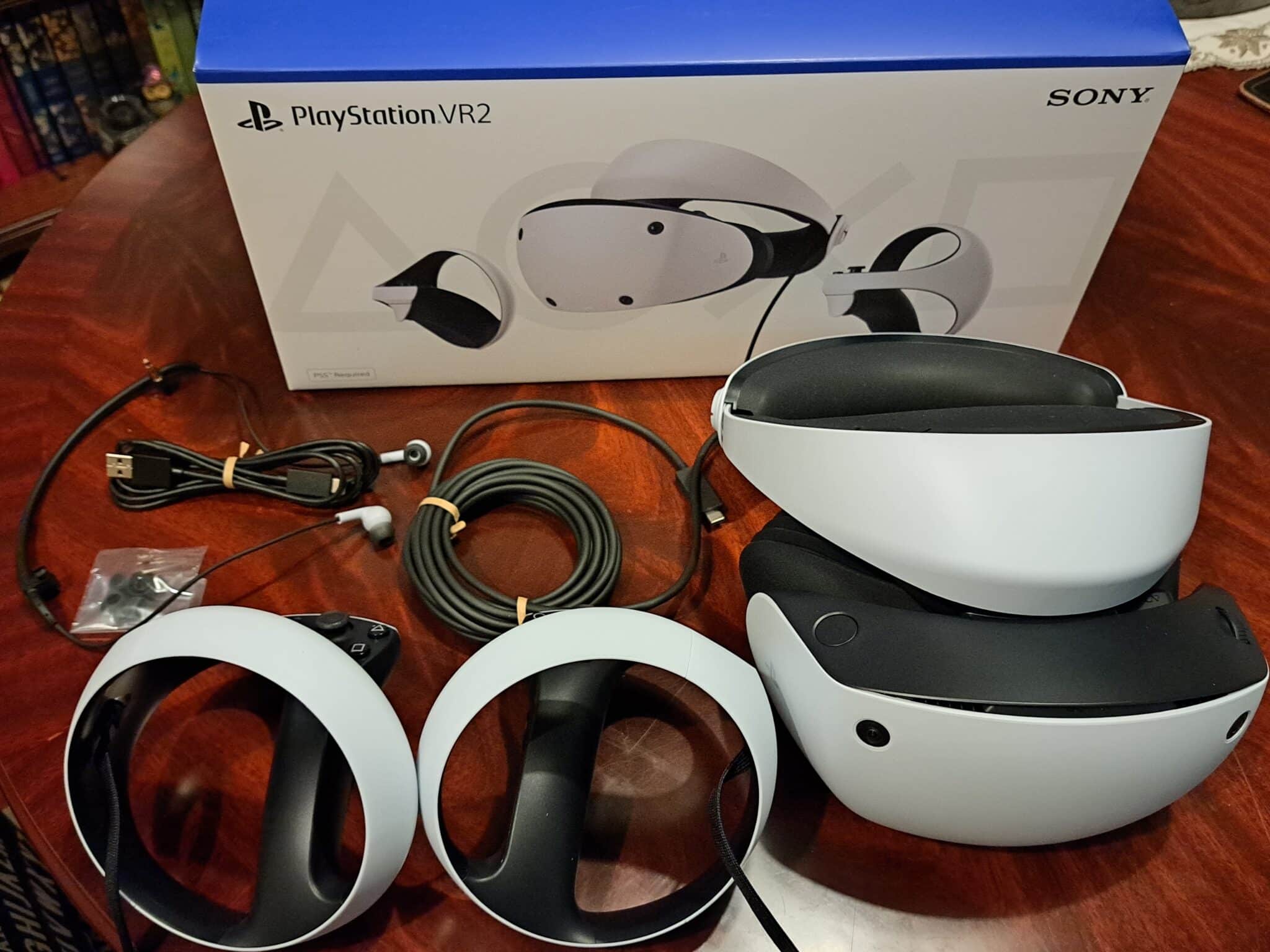
Sony clearly learned its lessons from the original PSVR and PlayStation VR2 feels like a major step for console VR, bridging the gap for those who want high-end features in a package that’s easier to manage than a PC VR setup. PS5 doesn’t have wireless support or sideloading, but PSVR 2 also benefits from store curation in the same way Quest does while being far simpler to setup than PC VR.
Horizon Call of the Mountain is a perfect demonstration of the headset’s capabilities – it is comfortable and the headset’s new features add significant immersion to the experience. The large number of ports might be off-putting if you already own Quest 2 and a wired headset might feel like a step back from standalone headsets. However, PSVR 2 offers a huge leap in launch content and technology compared to the original PSVR headset, making it a compelling option for PS5 owners or those looking to upgrade straight from PSVR.
For the asking price, PlayStation VR2 offers incredible quality, especially if you’re already in the PlayStation ecosystem. It arrives armed with deeper and more interesting exclusives than its predecessor’s launch in 2016, alongside hardware features that deliver greater immersion and give developers much more to build on. With 100+ games in the pipeline for PSVR 2, Sony is off to a great start.

